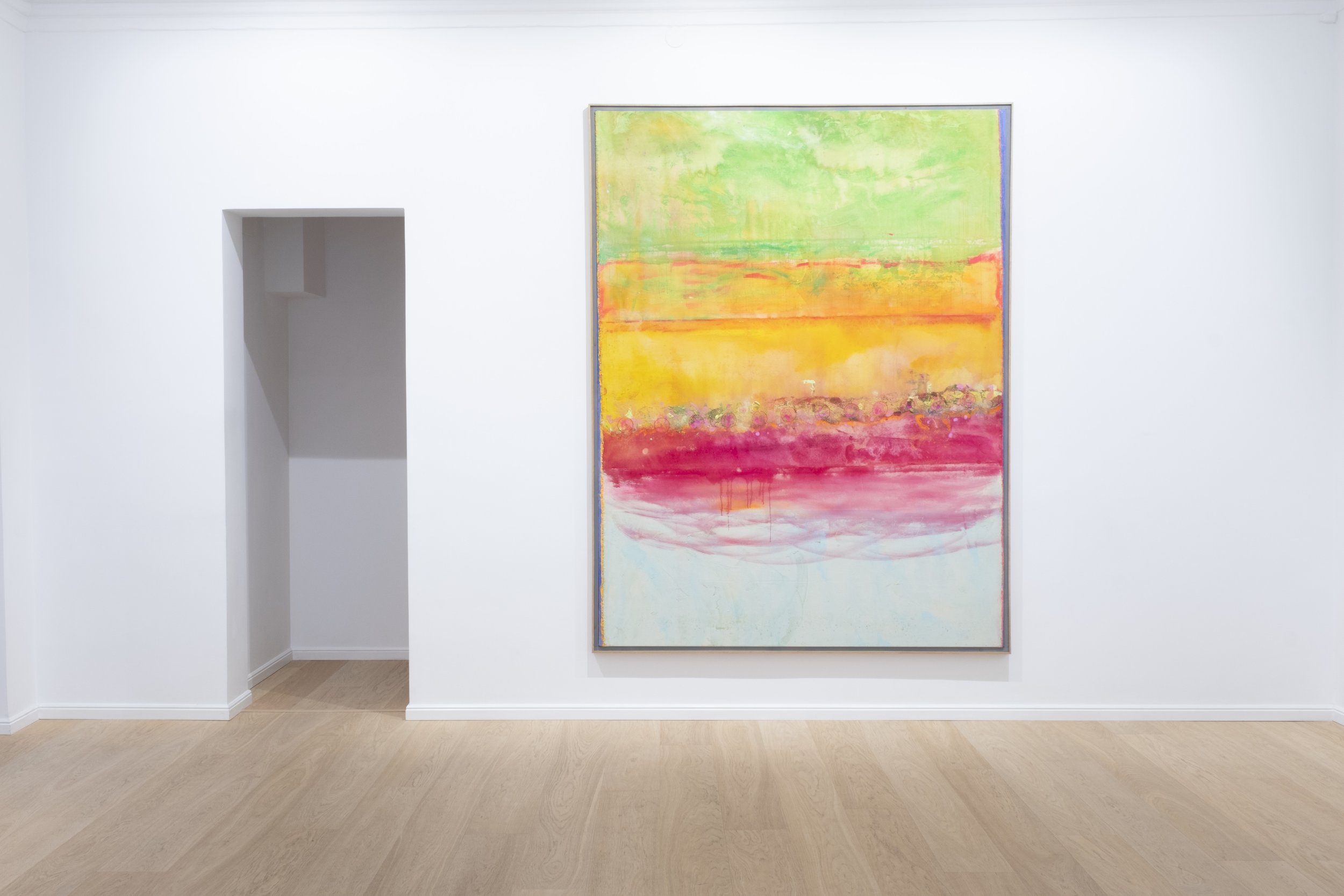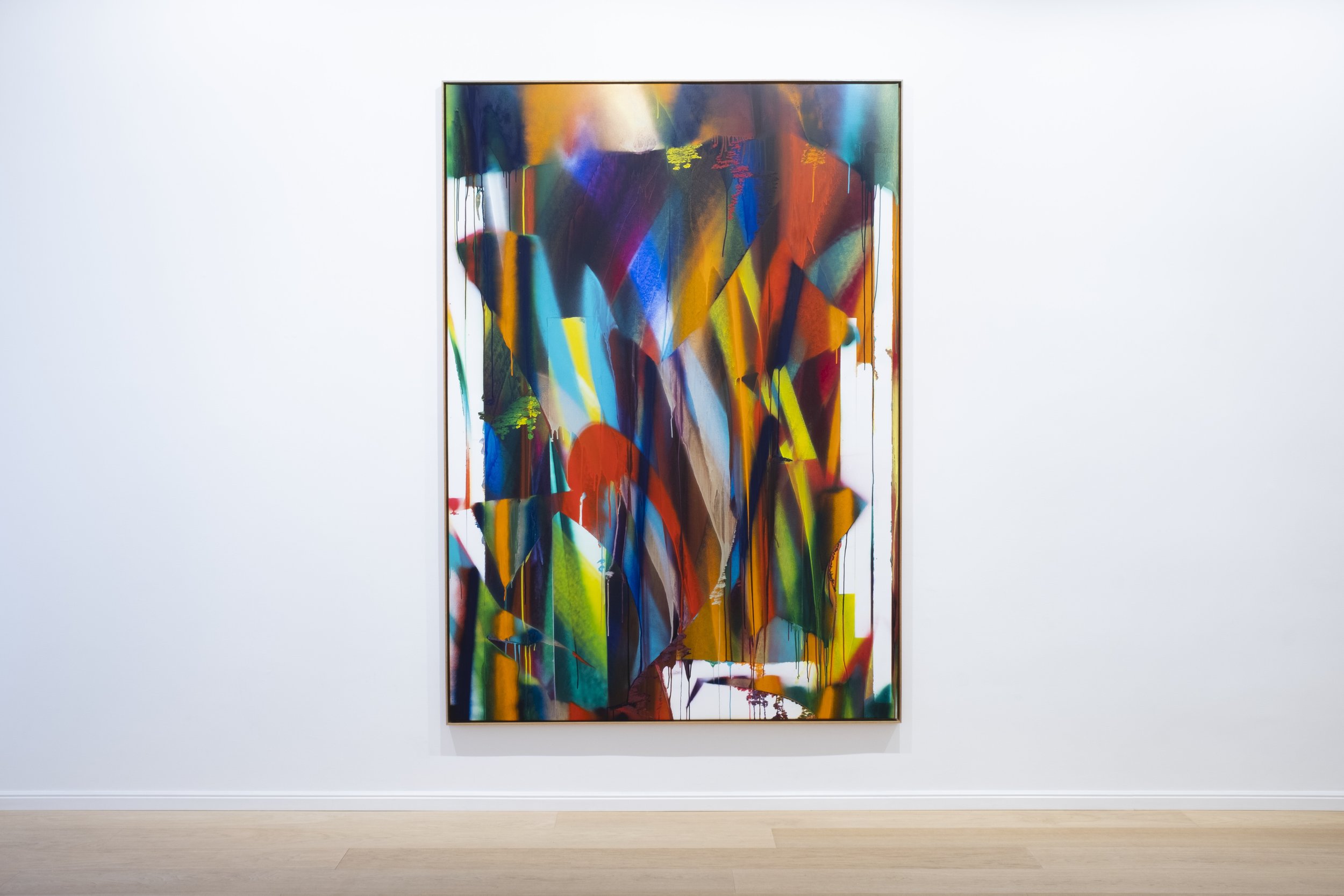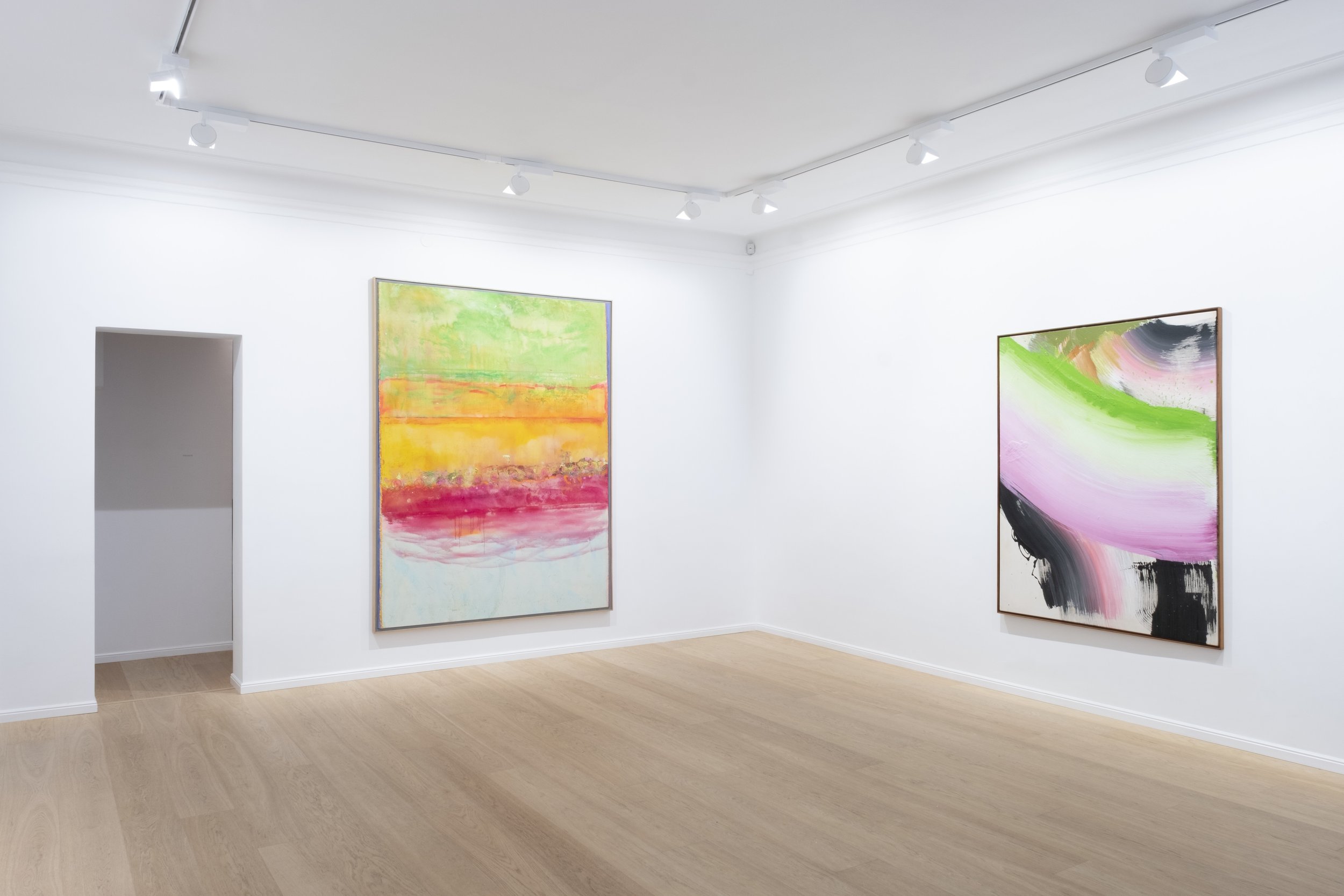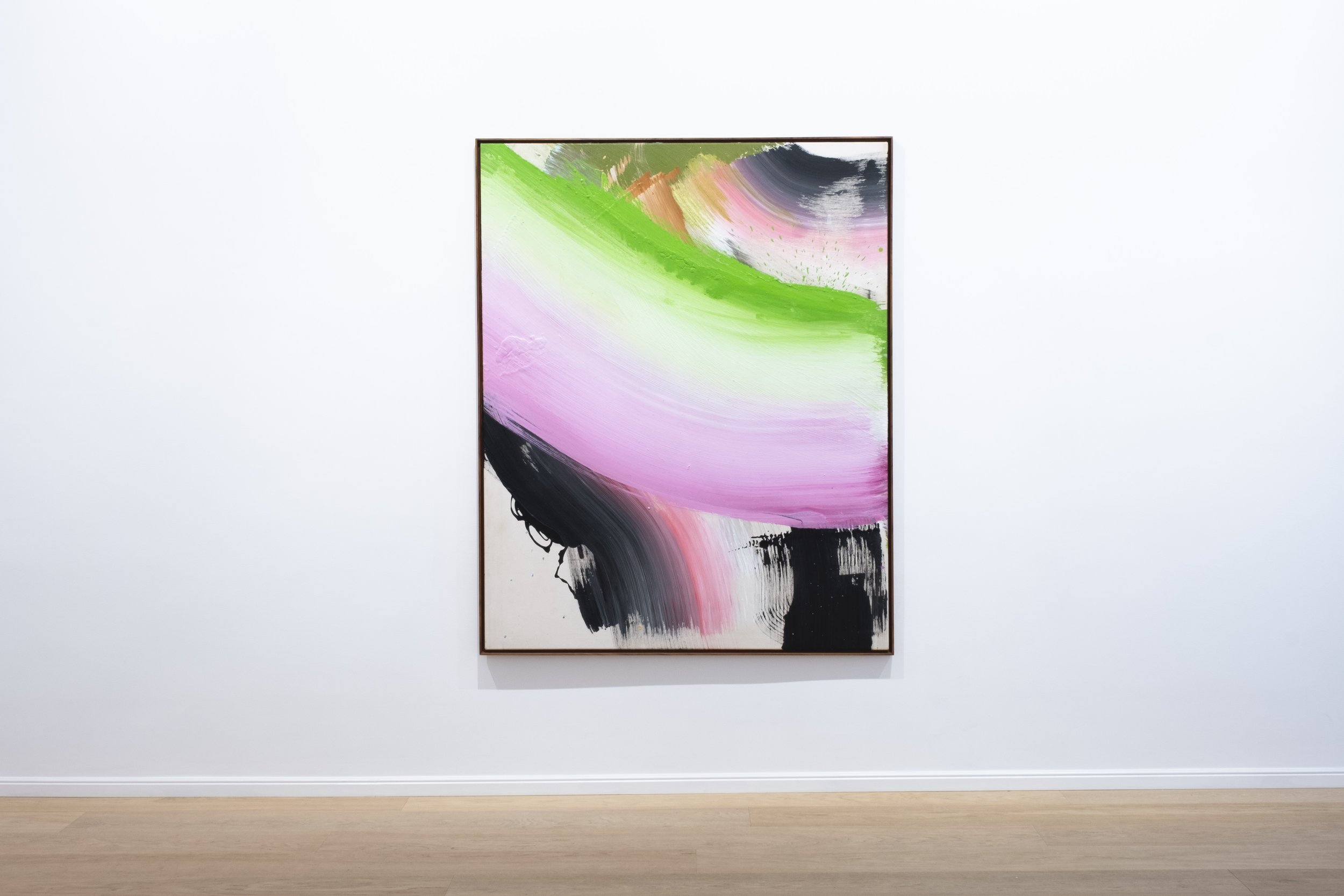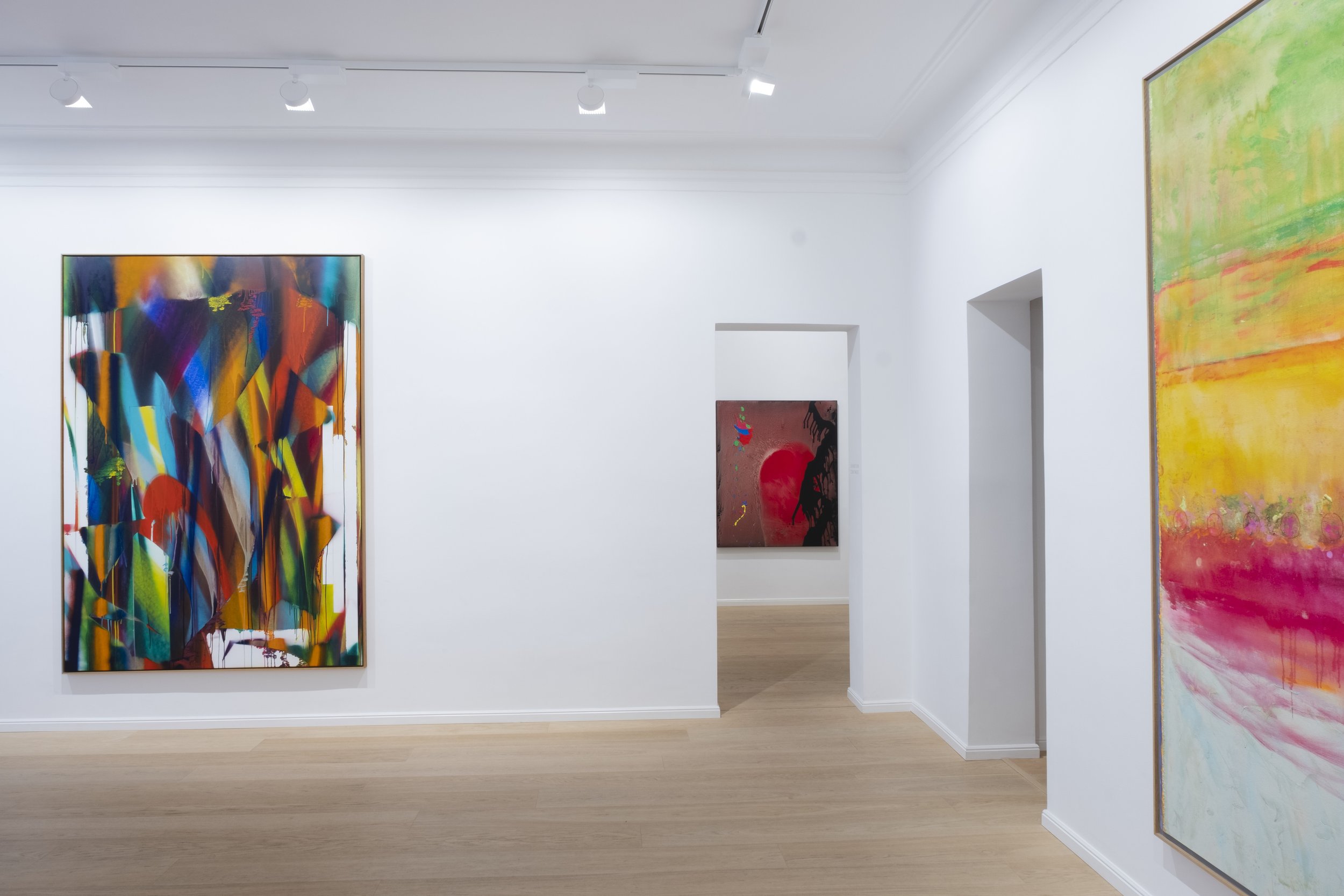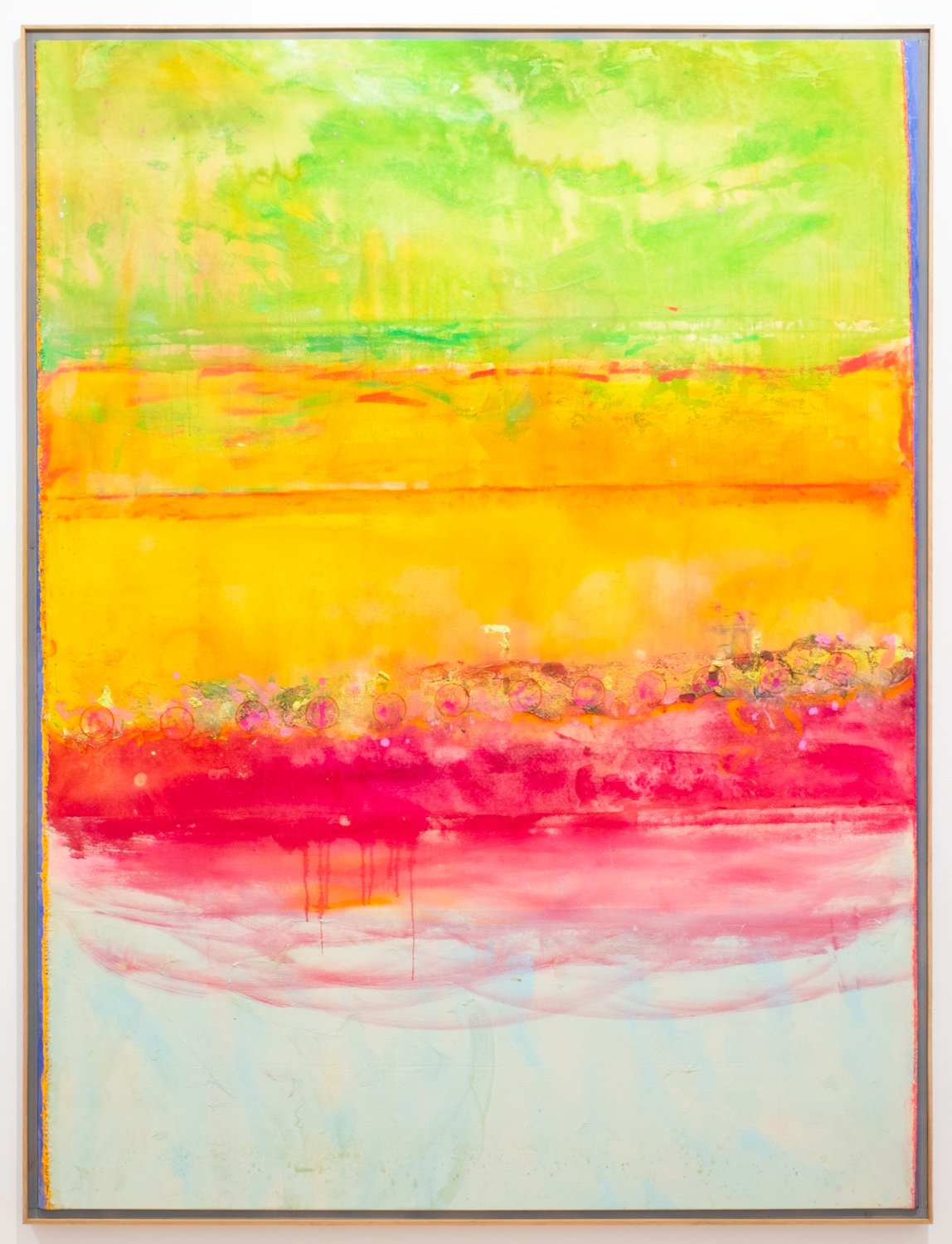PAINTING IS…
Frank Bowling / Ed Clark / Katharina Grosse / John Hoyland
23 October – 20 November 2021
Larsen Warner is very pleased to present Painting is…, a group exhibition featuring Frank Bowling, Ed Clark, Katharina Grosse, and John Hoyland. Painting Is...presents a snapshot of abstract painting today by a selection of artists that continue to shape, transform and influence the language and very definition of abstract painting. Each artist included has built upon the legacy of earlier generations, using abstraction and non-figurative visual languages to open new paths to optical, emotional, and physical expression. The exhibition aims to give a Scandinavian audience a unique opportunity to view the work of this select group of international artists, in some cases for the first time.
The works presented in the exhibition are all imbued with a sense of joy related to the creative freedom that abstract painting allows and the uncertainties that can materialise within the non-figurative realm. Each artist proves that Abstraction can create and develop a new way of articulating reality, by enacting something of our experience of existence, rather than our rationalisation of it. Through rigorous experimentation each artist is articulating and creating compellingly mysterious and spiritually transcendent painting, with moments of real physical intensity and drama. Painting is… aims to consider how the languages of abstraction have remained urgent, relevant and critical as they have been revisited and reinvented by subsequent generations of artists and goes on to demonstrate the way in which the history and legacy of abstract painting continues to inspire artists working today.
Frank Bowling OBE RA (b.1934 British Guiana) is widely recognised as one of the most important artists in the field of abstraction in the second half of the 20th century. Bowling’s manipulation of the surface of his paintings result in a series of enigmatic and highly expressive works that portray a visual dance between intent and accident. Bowling has always regarded painting as an intensely physical act as well as an aesthetic process. Just as a composer orchestrates their musicians, so Bowling acts as composer to his materials; Canvas is cut then stapled or stitched to the surface. Paint is poured, stained, scratched and dripped creating layered rivers and pools of colour, with the alchemic forces of scattering chemicals used to create a myriad of forms and textures. In Rush Green Too, 2015 colour, tone, form and pace are perfectly balanced, with large areas of lush, expansive washes contrasted alongside moments of physical intensity and drama.
Ed Clark, Rainbow, 2003, Acrylic on canvas, 180 x 144 cm
Katharina Grosse (b1961, Freiburg im Breisgau, Germany) is known for her large-scale, often site-specific and in-situ paintings, disrupting and redefining hierarchies and boundaries and shifting perspectives of the audience. Grosse sees her painting as allowing for a unique understanding of time. Unlike any other mediums it allows us to see different moments in time within one and the same painting. This is most evident in Grosse’s studio canvases, represented in the exhibition by Untitled, 2018. Grosse places stencils over areas of the canvas at various stages of the painting process, resulting in chromatic layers that record her thoughts and actions. Veils of colour and broad, propulsive marks streak across the surface and it is this accumulation of marks and layers that generate a cluster of time. Grosse has noted “Because the painted picture is multilayered, it is very tactile. As a time-cluster, it stimulates the entire bodily intelligence; it creates an experience of intertwined energy.” As well as her smaller studio canvases, she paints on found materials, cast-metal sculptures and lengths of draped fabric, creating fully immersive installations, for Grosse, there is no distinction between painting, sculpture and architecture.
John Hoyland, Roar 02.02.05, 2005, Acrylic on canvas, 152.4 x 127 cm. Image courtesy the artist and Hales Gallery. © John Hoyland. All rights reserved, DACS 2021
Frank Bowling, Rush Green Too, 2015, Acrylic on canvas, 245 x 185.5 cm
Ed Clark (b.1926 d. 2019, USA) emerged in the 1950s as a pioneer of the New York School. Over the course of seven decades, his experimentations with pure color, abstract form, and the seductive materiality of paint have yielded painting of remarkable originality that has extended and broadened the language of American abstraction. Clark’s paintings combine and balance the emotionality of the Abstract Expressionists with the cool factuality of the succeeding generation of Minimalist artists who emerged in the 1960s. Rainbow, 2003 is an example of the painting for which Clark became best known. Thick bands of buoyant colours spiked with white have been applied in broad horizontal swaths across the canvas and seem to at once conjure thoughts of landscape and pure abstract gesture. Clark’s primary interests were in the materiality of paint, sense of speed and monumentality that the sweep of a mark imparted to his abstractions. Clark developed this way of working when he was a young artist living hand-to-mouth in Paris and, in search of something wider than a painter’s brush, picked up a janitor’s boom. He used it to push thick piles of paint across a canvas lying on the floor and it eventually became his preferred tool. Defying the discreet categories of gestural and hard-edged abstraction, Clark has masterfully interwoven these approaches into a unique form of expressionism.
Katharina Grosse, Untitled, 2018, Acrylic on canvas, 240 x 170 cm
